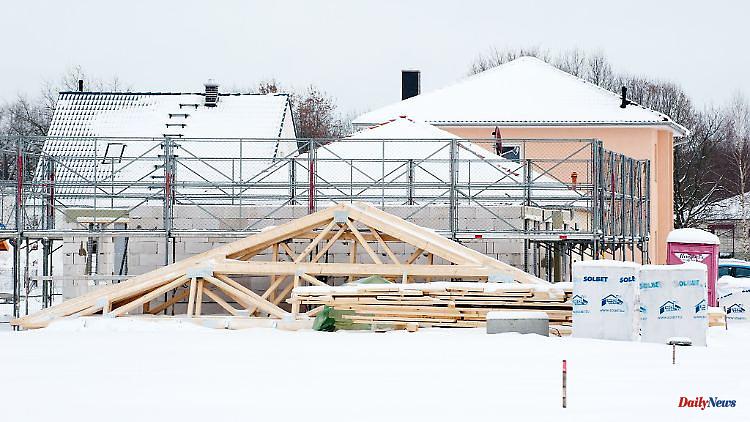Actually, the construction companies have to take care of adequate protection of the construction site against rain and snow in winter. If that doesn't happen, it would be better for the builders to spend their money.
Trust is good, control is better: This is what building experts advise when building a private house in winter. The building should be protected from wind, rain, snow and frost, otherwise there is a risk of serious damage.
"In the next few weeks, builders should therefore not rely solely on the diligence of their construction companies, but should check whether their shell is adequately protected," advises Marc Ellinger from the Association of Private Builders (VPB). If necessary, you should get foils and cover the neuralgic points.
Although protection against winter weather is usually the task of the construction companies, the contractual obligations are not always met, according to the VPB. If the construction company does not follow the client's instructions, you should take action yourself if necessary. "It's worth it, because the lion's share of the future residents' equity is already in the shell," says the building surveyor Ellinger.
In one special case, you should act quickly: According to Ellinger's experience, construction companies in financial difficulties often leave a construction site head over heels. "In that case, the builder should rather invest a few hundred euros in security than stand idly by as his house quickly turns into a ruin due to the weather," the building expert advises.
This is what builders can do:
basement cutout
Cover the open cut-out for the basement stairs in the basement ceiling and cover with foil. If rain and meltwater have already run into the basement, you have to remove it, drain the basement and then seal the outlet. If the water remains in it, there is a risk of mold growth later.
Cellar shafts and ceiling penetrations
Open basement shafts and ceiling penetrations, which the shell builders have left out for water and heating pipes, should also be covered to be puncture-proof. Also put a foil over it to protect against water.
mural crowns
If the roof is still missing, the upper end of the wall - the so-called wall crown - should be covered. Otherwise the masonry will fill up for weeks. If the water in the stone freezes during frost, it expands and bursts the material. The VPB advises covering parapets as well.
roof openings
Are all openings in the roof sealed? If not, cover any open window holes with foil.
rain gutters
The building surveyor Ellinger advises checking the downpipes that come off the gutters. If you simply run the water into the ground next to the house wall, this can cause damage. Therefore, builders should put a plastic pipe on the lower end of the downpipe and divert the rainwater into the site. And as far away from the house as possible.
water and heating pipes
If these have already been laid and filled, but the heating is still off, the pipes threaten to burst. This can be expensive, since components usually have to be opened for repairs. The expert therefore advises: either heat the house or empty the water-carrying pipes again.
material lying around
Cement sacks, bricks, wood or insulating materials lying around unprotected outdoors on the construction site can get wet - and thus no longer usable. In such cases, Ellinger advises taking photos of the materials to document the damage.
(This article was first published on Tuesday, January 17, 2023.)












